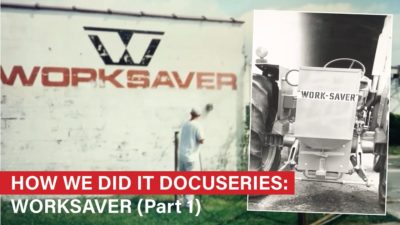The best approach to selling is asking good questions, and then listening intently to the answers. Selling is not about talking well; it’s the ability to gather information, consolidate it and provide a helpful solution.
Customers want to talk! They want to tell you about their world, their unique problems and themselves. Even if you’ve heard it a million times before and you know what they are going to say before they say it, let them talk. Customers buy for their reasons, not for your reasons and the only way you can find out their reasons is to ask questions and listen to their responses.
The right questions allows a customer to help you present them with the right solution, one that they would be willing to buy. At this point in the selling process, you become a detective — hunting for facts and uncovering emotions to move the customer into the product that is a perfect fit for their needs.
Ask the Right Questions
The first question you should ask will ultimately help you understand their current situation. As an example, if a customer is looking at your mower display, your sales person should ask, “Are you looking at replacing a mower or would this be the first mower you have invested in?” If it is a replacement for an existing mower, then ask why they are replacing their mower to find out what their pain is. Maybe they got tired of fixing the old one and are looking for one that is a higher quality. It could be that they want a mower that is simple to start or operate. Whatever the reason, keep in mind you will want to bring it back up as you demonstrate the mower or product that would best fit their needs.
Every bit of information you gather will add to your ability to lead them into the right product at the right price point and help you close the sale faster.
The second question would relate to specifically how they see themselves using the product. Ask about how and where they will operate the equipment and how much time they would be using the equipment on a yearly basis. Their answers will help you direct them to the right product that will give them the best experience. You are the professional and they are expecting you to help them select the right product for their unique situation.
Create a High Performance Dealership with Bob Clements is a new series brought to you by Yanmar.
Yanmar — Don’t settle for less when you can have more. For example, Yanmar makes all its compact tractors’ major drivetrain components – the Yanmar engine, transmission, and axles — in-house. Because they’re made to work perfectly together, you and your customers get a hardworking machine with more usable horsepower, less power loss, and a smoother, more comfortable ride. Yanmar’s tractors are designed to work as hard as you do for a lifetime. Strengthen your dealership with Yanmar today: AgMarketing@yanmar.com or call 770-877-9894.
I like to then ask a question that helps me understand who will be involved in the purchasing decision. For instance, ask, “Who other than yourself would use the equipment most of the time?” Many times, a husband will be looking at a mower, but and his wife will actually be operating it most of the time. If that’s the case, if the wife is with her husband, find out what she is looking for as well. The goal is to make sure that both decision-makers are getting the features they want and need.
I also like to ask, “What time frame are you operating under as you are consider making this type of decision?” This simple question is important if you have multiple customers in your showroom at the same time. It will help you decided how to divide your time between the customers without making them feel rushed or, even worse, ignored.
Keep in mind if the customer says, “I need to bring my wife in because she will be using the mower some of the time,” you know she is the final decision-maker. Your job then is to get the customer excited about bringing his wife in so you can present to them both at the same time.
Remember, selling isn’t telling. Instead, selling is asking good questions, intently listening to the customer’s responses and then showing the customer how what they told you matches the equipment you are helping them invest in.
Filling Your Customers’ Needs
From asking questions, you now have a good sense of what a customer is looking for in a piece of equipment. At this point, most sales people make the fatal mistake of thinking that their job is to start talking and listing all the features and benefits of the product. This seems to make sense. After all, if it were important enough for the manufacturer to build a feature into a product, you would want to make sure that you thoroughly explained every point to the potential customer. However, that’s where you will have gone wrong.
Companies may design their products to meet the many needs of every customer, but not every customer will be excited about every feature. Remember, your goal is to focus on the specific needs of the customer based upon the questions you asked. If during your initial questions, the customer expressed interest in purchasing a mower that was going to give him or her years of service before it needed to be replaced, you would want to focus the first part of your presentation of the mower on the company and their beliefs about the importance of building quality products.
If you talked about a company’s reputation for quality and durability and then demonstrated both the quality of the materials and the mower’s engineering, you will be reinforcing the customer’s desire to have a mower that will last and be easy to use.
Next Installment: Closing the Sale
In Part 2, Clements explains how to close a sale by turning back to those initial questions and determining whether or not a product will meet a customer’s needs.






Post a comment
Report Abusive Comment